Once upon a time, a little car with a big dream rolled onto the scene and changed the world forever. The history of the Volkswagen Beetle tells the tale of a cultural icon that survived wars, captured heaths, and became the ultimate symbol of charm. Without a doubt, the Beetle’s journey is one of the most fascinating stories in automotive history – let’s take a ride.
The Humble Beginnings of the Now Iconic Bug
The Beetle wasn’t always called the Beetle. In fact, it started with the unassuming title of the Volkswagen Type 1, marketed simply as the Volkswagen. It wasn’t until 1968 – after years of global success, that it officially earned its famous nickname.
Surprising, isn’t it? Almost as surprising as the origins of what later became a poster child for peace, love, and freedom. Trust us, the backstory is as fascinating as this charming four-wheeler itself.
It All Started With a Dream, a Dictator, and a Designer
Believe it or not, the car that would later be adorned with daisies and peace signs started as an idea in the 1930s, under the watchful eye of none other than Adolf Hitler. Yes, the future hippie icon was originally part of a much less chill plan.
Hitler wanted a “people’s car” (Volkswagen in German) that was affordable, simple, and could cruise along Germany’s new highway system, the Reichsautobahn. All in all, it would be your everyday city car that could handle a bit of a journey too.
Ferdinand Porsche was tasked with bringing this vision to life. However, the foundation for the Beetle’s design wasn’t entirely original. A Hungarian-Austrian engineer named Béla Barényi had already conceptualized a similar design almost 10 years earlier.
The history of the Volkswagen Beetle with model changes remained remarkably consistent. It took over six decades – until 1998 – for this four-wheeler to get its first major glow-up. Turns out, even legends need a little refresh now and then.
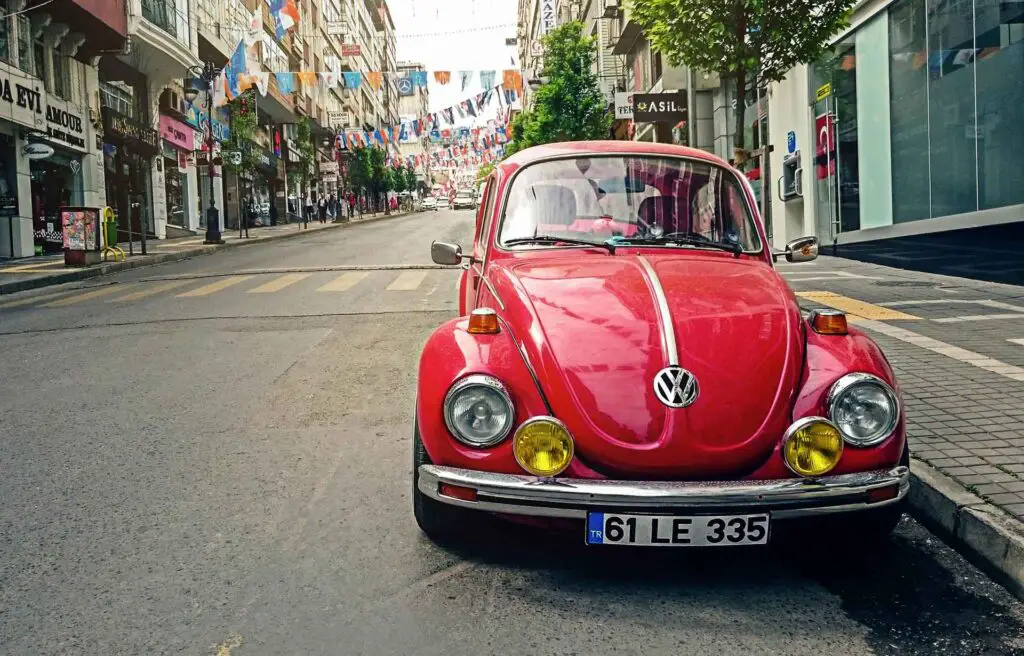
The History of the Volkswagen Beetle Is Tightly Interwoven With the Wartimes
Volkswagen had grand plans in the late 1930s, but history had other ideas. By 1938, the first shiny prototypes were ready to roll, and a brand-new factory had sprung up to produce them. But just as things were revving up, World War II broke out, and the production was put into park.
The factory, instead of building “people’s cars,” was repurposed for the war effort, churning out military vehicles and munitions. And then, as if things couldn’t get worse, the factory itself became a target, bombed into near oblivion.
By the time the dust settled and the war was over, the once-bustling factory was in ruins, stuck in a swampy corner of the river Aller – an area that would eventually become Wolfsburg. Not a single civilian Beetle had been built yet, and the dream of affordable transportation seemed as shaky as the factory’s foundations.
It wasn’t until 1947 that the Beetle finally got its chance to hit the road. Before that, production restarted under Allied supervision, primarily to provide transportation for occupying troops. In a twist of fate, the little car that almost didn’t make it was just beginning its journey to becoming a global icon.
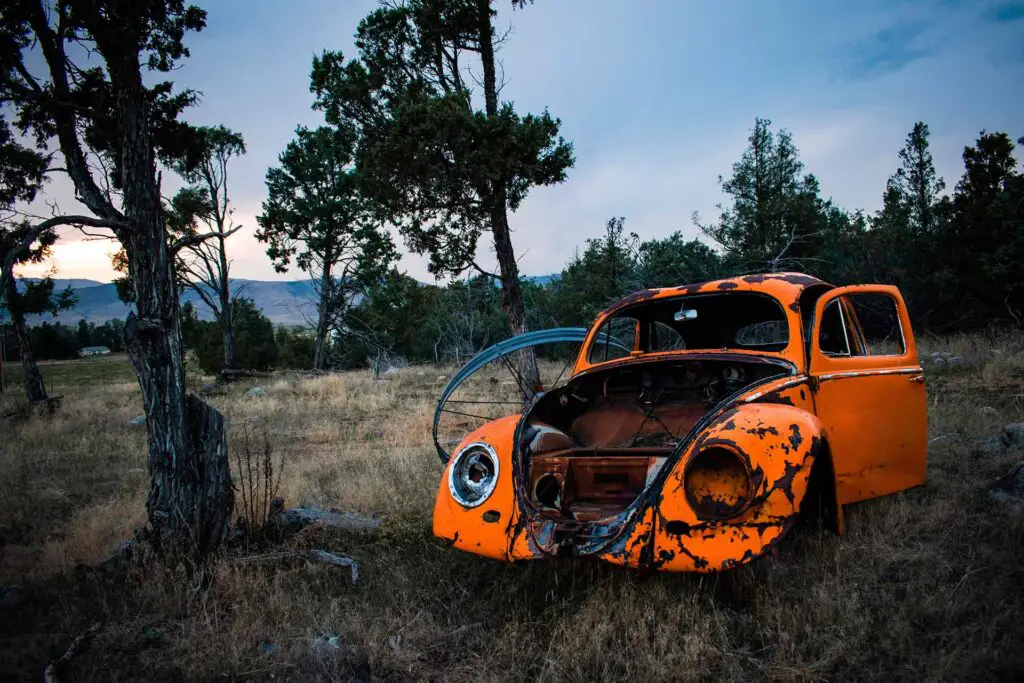
How the Bug Won Over the World, One Country at a Time
As the Beetle’s wheels began to turn, Heinz Nordhoff, a former Opel executive, stepped in to steer the factory. One of VW’s first big wins came in the Netherlands, where a savvy dealer named Ben Pon managed to sell 56 cars with such flair that Nordhoff couldn’t resist giving him an even bigger challenge – cracking the US market.
Pon packed a single VW and some spare parts and headed to New York. But his timing couldn’t have been worse. Post-war America wasn’t exactly rolling out the welcome mat for German products. The trip was a disaster – Pon ended up selling the vehicle and its spare parts just to cover his hotel bill before slinking back to Europe.
Determined to make the Bug a global phenomenon, Nordhoff also tried his luck in the US later that year, but even his efforts fell flat. Around the same time, ownership of Volkswagen officially transferred from the Allied Military Government to the West German federal government.
Finally, in 1950, the Beetle found its first real foothold in America. Max Hoffman became the official VW importer for the eastern US. Despite initial skepticism, Hoffman managed to sell 330 Beetles that year, mostly to other car dealerships. It wasn’t exactly a runaway success, but it was enough to keep the Bug’s American dream alive. From there, the four-wheeler slowly but surely crept into the hearts (and driveways) of people across the globe, proving that a little persistence and a lot of charm can go a long way.
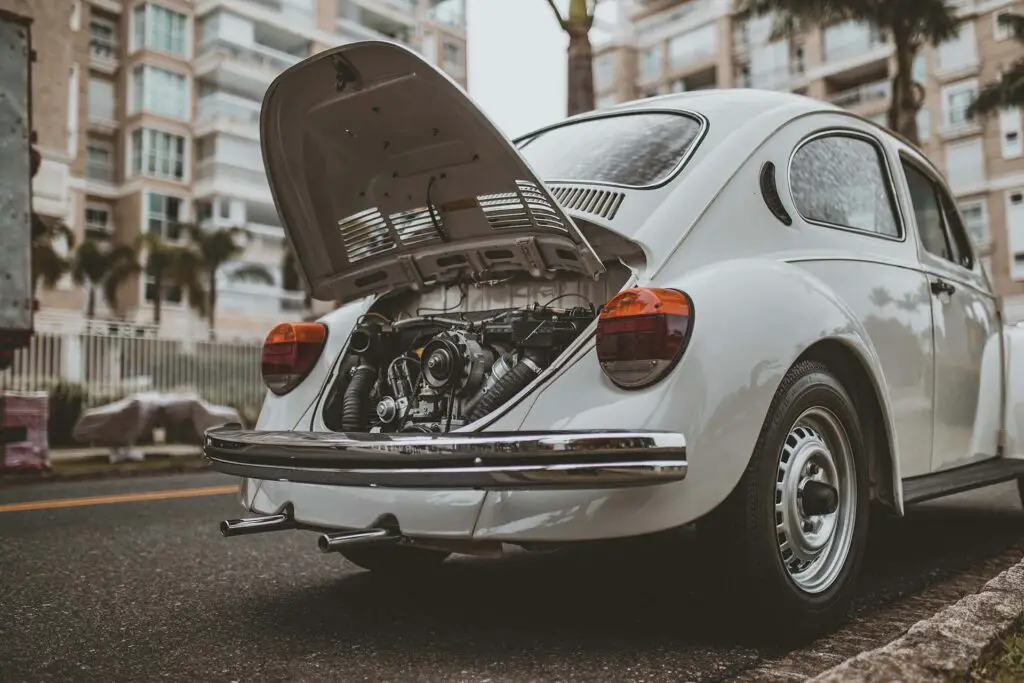
The Hippie Icon Era – Peace, Love, and Beetles
In the 1960s, the Volkswagen Beetle found its groove – and what a groove it was. From the fields of Woodstock to city streets painted with peace signs, the Beetle became the ultimate symbol of counterculture cool.
It was affordable, reliable, and delightfully quirky, making it the perfect ride for a generation looking to challenge the status quo. Who would’ve thought a car with such serious beginnings would end up being so… chill?
Meet Herbie – The Beetle That Stole Hearts (And Races)
Just when you thought the Beetle couldn’t get any more lovable, along came Herbie, the spunky, self-driving race car with a personality bigger than its engine. Herbie made his debut in the 1968 Disney film The Love Bug, winning not only races but also the hearts of audiences everywhere.
With his iconic racing stripes and the number 53, Herbie was a hero, a comedian, and, let’s be honest, a total scene-stealer. Who needs horsepower when you’ve got charm by the gallon? A few years back, one of the vehicles used in Herbie Goes to Monte Carlo and Herbie Goes Bananas sold for around $130,000, which makes it the most expensive Bug in the world.
From Big Screen to Pop Culture Phenomenon
Herbie didn’t just stop at being a movie star. Sequels, TV shows, and even a reboot in the 2000s kept the little car’s legacy alive. Beyond Herbie, the Beetle itself became a global icon, appearing in everything from music videos to garage bands’ album covers.
It wasn’t just a four-wheeler anymore – it was a symbol of nostalgia, rebellion, and good old-fashioned fun. Herbie may have had the spotlight, but every Beetle on the famous US routes carried a bit of that magic, making the Bug a timeless superstar in its own right.
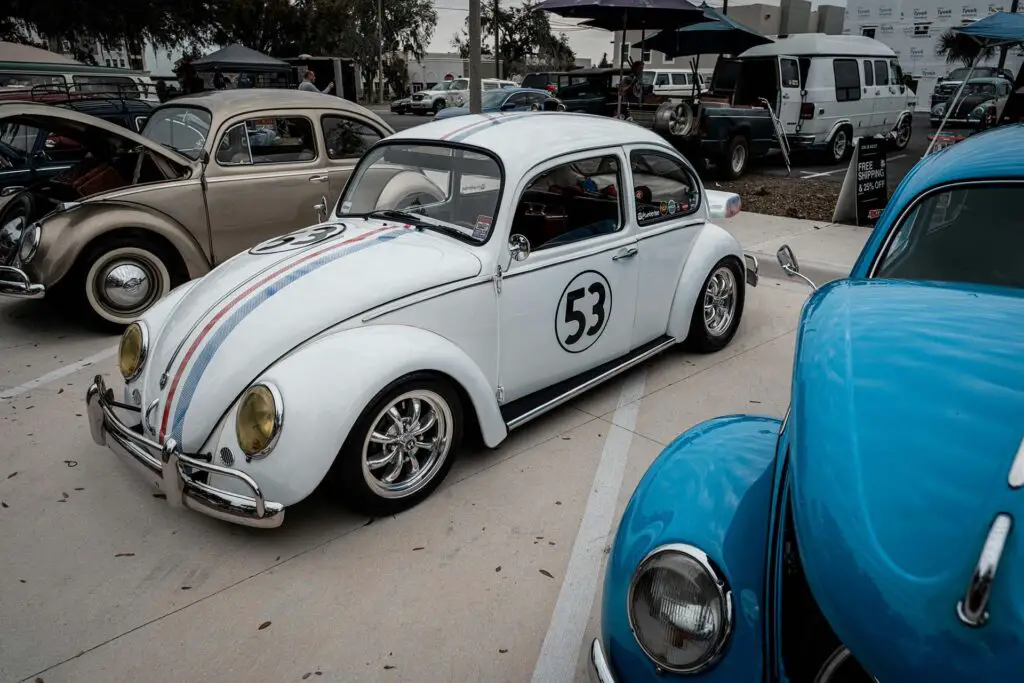
Changing Times, Bigger Cars, and the End of an Era
The 1970s were a whirlwind for the Volkswagen Beetle. The world was changing, and so were drivers’ preferences. Bigger cars with flashier designs and more horsepower started taking over the roads, leaving the humble Bug struggling to keep up. However, the four-wheeler still managed to secure a few more milestones worth celebrating:
- Introduction of the 1302 Super Beetle in 1970 with improved suspension and more trunk space,
- Upgrade to a 1600cc engine for better performance in 1971, enhancing performance,
- The Beetle surpassed the Ford Model T’s production record in 1972, with over 15 million units produced,
- In 1974, production ended at the original factory, the Wolfsburg plant in Germany,
- Introduction of electronic fuel injection in 1974 with peak output adjusted to 46 horsepower.
By the late ‘70s, the writing was on the wall. The Beetle’s classic design was losing its spark in a world of larger, faster, and more modern cars. But fast-forward to 2002, and the Beetle got a serious glow-up.
Volkswagen introduced a retro redesign that paid homage to the car’s original charm while updating it for the 21st century. The new model combined nostalgia with modern conveniences like air conditioning, airbags, and a flower vase on the dashboard (because why not?). This reboot brought the Bug back into the spotlight, appealing to both die-hard fans and a new generation of drivers who wanted a ride with personality.
The Last Beetle Rolls off the Line – A Bittersweet Goodbye
Think the classic Beetle disappeared decades ago? Not so fast! The final production run of the original Type 1 rolled out of Puebla, Mexico, in 2003 – a staggering 70 years after Ferdinand Porsche first sketched its prototype. By that time, over 21 million Bugs had been sold worldwide.
But every road has an end. In 2019, the Beetle officially waved goodbye to the world. The last models – part of the Final Edition – came in soft shades of light blue or brown. Nearly 2 million of these new-generation Beetles were built, marking the end of an era. Time will only tell if we’ll get to see an EV version in the future – after all, the Bug was never shy to make a comeback.
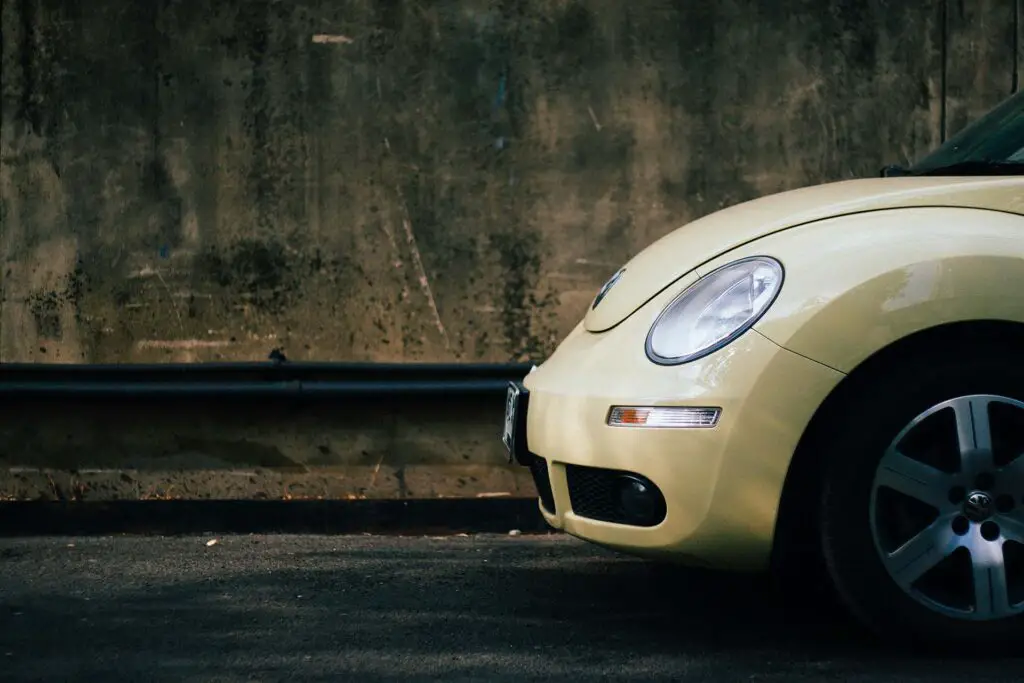
What the Beetle Taught Us About Cars (And Life)
The Beetle taught us that bigger isn’t always better, that simplicity can be revolutionary, and that personality beats perfection any day. This four-wheeler showed the world how to stand out without trying too hard – just be reliable, quirky, and full of charm. And, perhaps most importantly, it reminded us that even the smallest things can leave the biggest impressions.
The Beetle Is the Ultimate Proof That Good Things Come In Small, Quirky Packages
The Volkswagen Beetle’s journey is proof that life – and our favorite rides – can be full of surprises. It went from a utilitarian brainchild of a dictator to the groovy ride of flower children and beyond, leaving tire tracks on history’s most unexpected roads. Whether it was dodging potholes or stereotypes, the Beetle showed us that no matter where you start, it’s the journey that really matters. So here’s to the Bug – forever a legend, always a little weird, and absolutely unforgettable.








